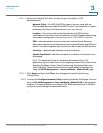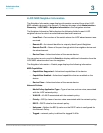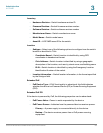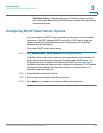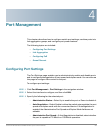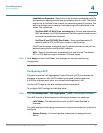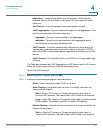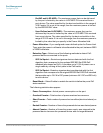
Port Management
Link Aggregation
Cisco Small Business SG200 Series 8-port Smart Switch 92
4
Link Aggregation
Link Aggregation allows one or more full-duplex Ethernet links to be aggregated
together to form a Link Aggregation Group (LAG). The switch treats the LAG as if it
is a single physical port, with improved fault tolerance and load- sharing capability.
A LAG interface can be either static or dynamic:
• Static LAG—Ports are assigned to a LAG directly by the administrator. The
ports remain dedicated LAG members until configured otherwise.
• Dynamic LAG—A dynamic LAG is configured with one or more candidate
ports. The LAG is formed by exchanging Link Aggregation Control Protocol
Data Units with the remote device connecting to the candidate ports. When
formed, the LAG might include only a subset of the eligible ports,
depending on the port number limitations for LAGs and other factors.
Candidate ports that are not selected as active member ports of a LAG are
standby ports. A standby port may be selected as an active member when
an active port in the same LAG fails.
The following topics provide additional information on the configuration pages
available in the Port Management > Link Aggregation menu:
• Configuring LAGs
• Configuring LAG Settings
• Configuring LACP
Configuring LAGs
The switch supports up to 4 LAGs, with 8 ports per LAG. Use the LAG
Management page to assign ports to LAGs and LACPs.
To display this page, click Port Management > Link Aggregation > LAG
Management in the navigation window.
Four dynamic LAGs are preconfigured by default named ch1 through ch4. They
have no port members and are disabled.
You can add or remove ports to or from a LAG without disrupting traffic on the
LAG.



